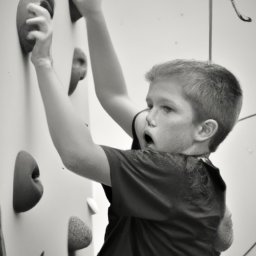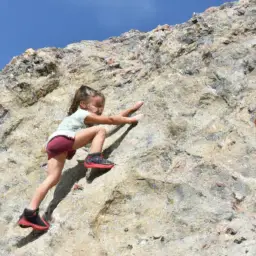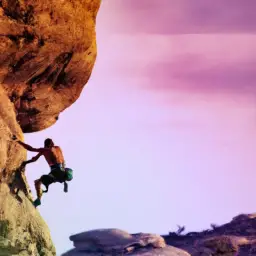Are you finding it harder to balance resilience and technology in today’s digital age? With the constant barrage of notifications and distractions, it’s easy to lose sight of the importance of grit and perseverance.
However, developing resilience is crucial for achieving success and overcoming obstacles in life.
In this article, we’ll explore the significance of resilience and grit, and how to strike a balance between technology and developing these essential traits. You’ll learn strategies for building resilience, nurturing it in children, and creating resilient communities.
By the end of this article, you’ll have a better understanding of how to cultivate grit in the digital age and enjoy the benefits of greater resilience.
Key Takeaways
- Finding a healthy balance between using technology and unplugging from it is important for building resilience in the digital age.
- Developing resilience involves practicing mindfulness, cultivating a growth mindset, and focusing on the process of improvement.
- Creating strong communities through local events and activities can provide a foundation of support and resilience in times of crisis.
- Nurturing resilience in children involves teaching mindfulness techniques, encouraging them to try new things, and praising their efforts.
Understanding the Importance of Resilience and Grit
You can’t always control what life throws at you, but developing grit and resilience is like building a strong shelter to weather any storm that comes your way. Teaching perseverance and overcoming adversity are essential skills that can help you navigate the challenges of the digital age.
In a world where technology provides instant gratification and constant distractions, it’s easy to give up when faced with obstacles. However, developing grit means learning to persevere, even when things get tough.
Resilience is also important in the digital age because it helps you bounce back from setbacks. As you navigate the online world, you may encounter cyberbullying, online harassment, or other negative experiences. Being resilient means that you’re able to recover from these experiences and move forward.
It’s important to teach children and adults alike the importance of resilience and grit, so that they can face the challenges of the digital age with confidence and strength.
Finding the Balance Between Technology and Resilience
Hey, let’s take a moment to talk about how we can strike a balance between using technology and cultivating resilience. In today’s digital age, we are constantly connected to our devices, which can be both a blessing and a curse. On one hand, technology makes our lives easier and more efficient, but on the other hand, it can also be a source of distraction and stress. In order to encourage grit and resilience, it’s important to find a healthy balance between using technology and unplugging from it.
One way to achieve this balance is through a digital detox. This means taking a break from technology for a set period of time, such as a day or a weekend. During this time, you can engage in activities that promote resilience, such as spending time in nature, practicing mindfulness, or pursuing a hobby or passion. A digital detox can help you reset and recharge, allowing you to approach technology with a healthier, more balanced mindset. By incorporating mindfulness practices into your daily routine, you can also cultivate resilience and grit. Mindfulness involves being present and fully engaged in the moment, which can help reduce stress and promote a sense of calm and clarity. This can be as simple as taking a few deep breaths or practicing a short meditation each day. By combining technology with mindfulness and other resilience-building practices, you can find a balance that allows you to thrive in the digital age.
| Pros | Cons | Neutral | ||
|---|---|---|---|---|
| Allows us to stay connected | Can be a source of distraction | Can be used in moderation | ||
| Provides access to information and resources | Can lead to addiction or dependence | Can be a helpful tool when used intentionally | ||
| Makes our lives easier and more efficient | Can contribute to feelings of overwhelm or stress | Can be a source of entertainment and enjoyment | Ultimately, the impact of technology on our lives depends on how we choose to use it. |
Strategies for Developing Resilience
Developing resilience is like building a strong foundation for a house, where each brick represents a strategy that reinforces our ability to bounce back from adversity.
One of the key strategies for developing resilience is practicing mindfulness. By being present in the moment without judgment, you can learn to regulate your emotions and respond to stressors in a more effective way. Mindfulness practices, such as meditation and breathing exercises, have been shown to reduce anxiety and depression, and increase feelings of well-being.
Another strategy for developing resilience is cultivating a growth mindset. This means embracing challenges as opportunities for growth and learning, rather than seeing them as threats to your abilities. By focusing on the process of improvement, rather than the outcome, you can build confidence and resilience in the face of setbacks.
With a growth mindset, you can develop a sense of purpose and meaning in your life, which can help you navigate difficult times with greater resilience.
By incorporating these strategies into your daily life, you can build a strong foundation of resilience in the digital age.
Nurturing Resilience in Children
Nurturing resilience in children involves fostering a mindset that embraces challenges as opportunities for growth and learning. As a parent or caregiver, you can help your child develop resilience by teaching them mindfulness techniques and building their confidence.
One way to teach mindfulness to children is through breathing exercises. Encourage your child to take deep breaths and focus on the sensation of air moving in and out of their body. This can help them calm down and regulate their emotions in stressful situations. Additionally, building your child’s confidence can help them feel more capable of handling challenges. Encourage them to try new things and praise their efforts, even if they don’t succeed at first. This can help them develop a growth mindset and see challenges as opportunities for learning and improvement.
| Mindfulness Techniques | Building Confidence | Benefits | ||||
|---|---|---|---|---|---|---|
| Deep breathing exercises | Encouraging trying new things | Helps regulate emotions and reduce stress | ||||
| Mindful listening | Praising effort, not just success | Develops a growth mindset and resilience | Body scan meditation | Practicing self-compassion | Improves self-awareness and self-acceptance |
Creating Resilient Communities
Creating strong communities is crucial in times of crisis, as it provides a sense of belonging and support that can help individuals overcome difficult situations. In the digital age, it’s important to find ways to encourage community involvement and peer support, despite the prevalence of technology.
With the rise of social media and virtual communication, it’s easy to feel connected to others without actually building meaningful relationships. However, in times of crisis, these virtual connections may not be enough to provide the necessary support and resilience.
One way to encourage community involvement is to create local events and activities that bring people together. This can include community service projects, neighborhood gatherings, or cultural celebrations. By participating in these events, individuals can build relationships with their neighbors and develop a sense of belonging to their community.
Peer support can also be fostered through these activities, as individuals can connect with others who have similar interests or experiences. In this way, strong communities can be created that provide a foundation of support and resilience in times of crisis.
Frequently Asked Questions
What are some specific examples of technologies that can help develop resilience and grit?
If you’re looking to develop resilience and grit, there are a few technologies that can help.
Mindfulness practices, like meditation apps or stress-reducing games, can help you stay focused and calm in the face of adversity.
Virtual reality simulations can also be useful, as they allow you to practice facing challenging situations in a safe and controlled environment. For example, military personnel can use VR simulations to prepare for combat situations.
Overall, while technology can be a valuable tool for developing resilience and grit, it’s important to remember that these traits ultimately come from within.
How can individuals measure their own level of resilience and grit?
To measure your own level of resilience and grit, try self-assessment activities. These could be anything from journaling about your strengths and weaknesses to taking a personality test that measures your resilience.
Additionally, participating in resilience building activities can help you develop and measure your level of grit. These activities could include setting achievable goals, practicing mindfulness, and seeking out challenging experiences.
By regularly assessing and strengthening your resilience and grit, you’ll be better equipped to navigate the challenges of the digital age and achieve your goals.
Can resilience and grit be taught, or are they innate qualities?
When exploring grit’s role in success, the question of whether resilience and grit can be taught or are innate qualities often arises. The debate between nature vs. nurture and its impact on developing resilience is ongoing.
While some argue that these traits are inherent and cannot be taught, others believe that resilience and grit can be developed through practice and experience. While it’s true that some individuals may have a natural inclination towards these qualities, it’s also possible to cultivate and improve them over time.
By facing and overcoming challenges, seeking out feedback and support, and practicing perseverance, individuals can develop their resilience and grit. So, while nature may play a role, nurture and effort are also key factors in developing these important qualities.
Are there any negative effects of focusing too much on resilience and grit?
Focusing too much on resilience and grit can have potential drawbacks. While developing these qualities can be beneficial, it’s important to find a balance and not overemphasize them.
Overemphasis on resilience and grit can lead to individuals feeling like they always have to tough it out alone and not seek help when needed.
Additionally, the role of technology in developing resilience and grit needs to be carefully considered. While technology can provide helpful resources and tools, relying too heavily on it can hinder an individual’s ability to develop these qualities independently.
Therefore, it’s important to find a healthy balance between developing resilience and grit, while also utilizing technology in a way that supports and enhances this development.
How can communities support and encourage the development of resilience and grit in individuals?
To develop resilience and grit, you need to have the support of your community. Communities can play a vital role in supporting and encouraging the development of resilience and grit in individuals.
One way to do this is through mentorship programs, where individuals can learn from experienced mentors who have already gone through the process of developing these skills.
Community involvement is also crucial, as it helps individuals to feel like they’re part of something bigger. By working together and supporting one another, individuals can develop the resilience and grit needed to overcome challenges and achieve their goals.
Conclusion
Congratulations! You’ve learned about the importance of resilience and grit in the digital age and how to balance them with technology.
You now have a better understanding of how to develop strategies for building resilience and how to nurture it in children.
Remember, resilience is the ability to bounce back from setbacks and challenges, and it’s an essential life skill. By incorporating mindfulness, self-compassion, and positive self-talk into your everyday life, you can build your resilience and be better equipped to handle whatever comes your way.
So, keep pushing forward, stay connected with your community, and continue to foster your resilience and grit in this digital age.











































































































